Our society was designed from the ground up to accommodate the needs of able-bodied individuals, so there are times when everyday situations can become a struggle for those who are deaf. There are barriers to basic access that limit the rights and freedoms of those who can not hear, subtly perpetuating an existing structure of oppression.
Even with all our modern technology, progressive innovators have failed to address some of the real problems that persist when it comes to accessibility. Below are 5 accessibility issues that could use more attention in 2018.
5 Deaf Accessibility Solutions We Hope to See
1) Movie Theater Captioning
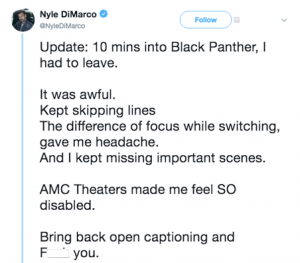 This past month, actor and activist Nyle DiMarco tweeted about his unfortunate experience at AMC Cinemas after attending a screening of the much anticipated Black Panther movie. Frustrated with the wild inconsistency of the captioning, which was dropping entire blocks of dialogue, DiMarco left the theater only ten minutes into the film. Hundreds of other deaf individuals joined DiMarco’s Twitter thread to share their own stories of failed captioning systems and culturally incompetent employees at cinemas; most concluding with a resignation that movie theaters are still not friendly places for deaf or otherwise disabled patrons.
This past month, actor and activist Nyle DiMarco tweeted about his unfortunate experience at AMC Cinemas after attending a screening of the much anticipated Black Panther movie. Frustrated with the wild inconsistency of the captioning, which was dropping entire blocks of dialogue, DiMarco left the theater only ten minutes into the film. Hundreds of other deaf individuals joined DiMarco’s Twitter thread to share their own stories of failed captioning systems and culturally incompetent employees at cinemas; most concluding with a resignation that movie theaters are still not friendly places for deaf or otherwise disabled patrons.
Movie theaters are a place of public accommodation where people from all walks of life are entitled to share an experience. A culturally significant film such as Black Panther, or a film that elicits rabid fandom like the Star Wars series, can be meaningful to people’s lives. Everyone deserves to share in that excitement and collective social moment if they so choose.
The closed captioning devices that deaf movie-goers are given to use make it difficult to focus on both the film, which is in the background, and the screen, which is in the foreground. The constant shift in focus can be exhausting, and can also cause the viewer to miss a great deal of the action in the movie. Captioning glasses offer a similar experience.
When reading tweets in the thread started by DiMarco, it becomes clear that open captioning (with the transcript right on the screen) is the preferred accommodation for deaf audiences. But movie theaters do not want to scare off the much larger audience of hearing people by offering all showings with open captions. Captioned showings are offered infrequently, typically at odd times, and there are even reported instances of movie theaters actually turning off the captioned version after hearing viewers complain.
We live in a time of liquid HD film and 3D IMAX cinematography and hologram performers, but deaf people can’t just enjoy a simple night at the movies. Wouldn’t it be great to see an elegant technological solution that meets the needs of deaf audiences while maintaining appeal to mainstream patrons?
2) Text-based Emergency Alerts and Service Lines
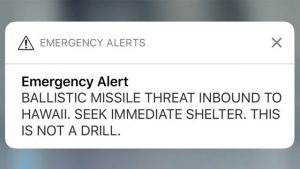 Although its true that programs like text-911 and text emergency alerts are beginning to roll out across the country, they are still embarrassingly unreliable considering the availability of technological resources in this era. Emergency management systems continue to malfunction, for example the alarming recent false missile alert that was sent out to mobile phones in Hawaii, which was not corrected by a follow-up text for a full 38 minutes.
Although its true that programs like text-911 and text emergency alerts are beginning to roll out across the country, they are still embarrassingly unreliable considering the availability of technological resources in this era. Emergency management systems continue to malfunction, for example the alarming recent false missile alert that was sent out to mobile phones in Hawaii, which was not corrected by a follow-up text for a full 38 minutes.
Those who can hear have more immediate access to updates during emergency situations, which literally places deaf people at a disadvantage for survival. What kind of innovative modern federal emergency alert and management solutions could be created if this issue was granted the kinds of intellectual resources, research funding, and priority that it deserves?
3) Interpreted Concerts and Performances
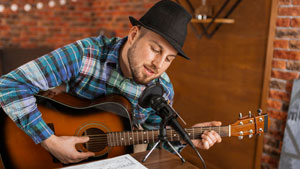 This is a fact that was for too long hidden, covered up, and denied, so it deserves to be repeated with great frequency: people who are d/Deaf deserve full access to the cultural arts!
This is a fact that was for too long hidden, covered up, and denied, so it deserves to be repeated with great frequency: people who are d/Deaf deserve full access to the cultural arts!
People who are deaf deserve access to every moment of shared collective joy, pain, awe, introspection, and outward rage that can be elicited through performance. To deny a person this experience is to deny them access to the very culture in which they live and the possibility of meaningful human connection. From Broadway shows, to the national anthem at a baseball game, to a pop concert, and everything in between, each and every person in attendance should be able to share in the energy.
This is an accessibility issue that can be resolved without the use of robotics or engineering! For those who use ASL to communicate, a properly placed, qualified sign language interpreter is the best option for full access, and if possible, hiring a deaf interpreter or trained performer. Yet there remains a stubborn set of barriers when it comes to access for the performing arts, namely a lack of cultural competency when it comes to accommodating a deaf audience. Often those organizing and hosting cultural events overlook their ADA obligation to provide equal access when creating a budget for the production, then find themselves scrambling to find the funding for accommodations.
Performing arts are an outlet for self expression; a way to explore complex human emotions and taboo topics. Theaters, venues, and even musicians themselves are being pressured to evolve to meet the demands of culturally aware audiences, who value inclusion.
4) Video phone services in jails and prisons
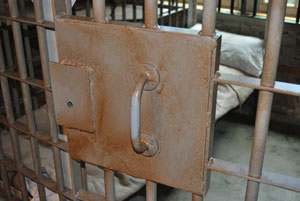 The rights of deaf inmates are extremely limited and often violated. There are thousands of deaf prisoners all across the country — a number of them wrongfully convicted — yet less than 10 prisons in the United States have video phones.
The rights of deaf inmates are extremely limited and often violated. There are thousands of deaf prisoners all across the country — a number of them wrongfully convicted — yet less than 10 prisons in the United States have video phones.
Inmates are routinely denied access to their families, friends and legal counsel because effective communication technologies are not present, or because the staff does not know how to operate or “supervise” calls on the outdated and unreliable equipment. Incarcerated deaf people grow increasingly isolated.
As inmates, deaf people are left out of orientations and safety meetings, and denied possibilities for social interaction. Prison televisions without captioning remove yet another line to the outside world. Deaf prisoners are denied access to post-secondary education and extracurricular activities. The end result is emotional withdrawal and deteriorating mental health.
The increase of civil rights activism in our country paired with the constant evolution of technologies could truly benefit prisoners who are deaf. Technological developers seeking a way to “give back” or solve a real social problem should consider assisting this extremely marginalized and silenced segment of the population.
5) Public and private transportation
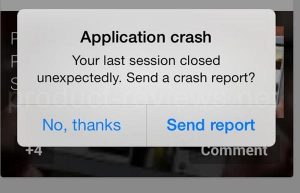 It’s hard to believe that it’s 2018 and we still haven’t found a consistent and effective means of communicating time, gate, and route changes for major transportation methods. Deaf people still frequently miss train and plane announcements, which often happen at the last minute. Visual notifications at airports can lag, and airport staff are not all trained to be culturally aware when interacting with a lost passenger who is deaf.
It’s hard to believe that it’s 2018 and we still haven’t found a consistent and effective means of communicating time, gate, and route changes for major transportation methods. Deaf people still frequently miss train and plane announcements, which often happen at the last minute. Visual notifications at airports can lag, and airport staff are not all trained to be culturally aware when interacting with a lost passenger who is deaf.
Transportations apps are great in theory, but in-practice they’re often glitchy, not updated in real-time, or cannot be accessed while traveling underground. This not only impacts deaf passengers. For example: if a flight boards 30 minutes early, any passengers who have just stepped out to get some fresh air or who are in a smoking area can very easily miss the overhead announcement. Transportation companion apps are rarely innovative or even user-friendly. Sometimes the apps work smoothly and as intended, then other times the apps crash or close out at critical moments, leaving travelers without the tools they need. For passengers who can not hear, this can be very confusing and frustrating.
If airlines and public transportation companies hope to regain the numbers they continue to lose, they may want to make a serious investment in the way they digitally connect with passengers. Making transportation a seamless and integrated experience in people’s lives can help more people experience the benefits of traveling.
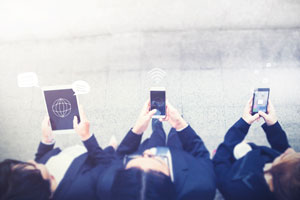 Intricate robotic communication devices, such as “sign language gloves” and intuitive interpreting apps, have always captivated the minds of innovators looking to help bridge the gap between the deaf and hearing world. If advanced to a stage of development where they functioned as intended, these types of devices would offer an interesting new option for deaf and hearing individuals to communicate in one-to-one, or maybe even small group settings. However, most people who are actively involved with the deaf community know that navigating the language barrier during calm, planned personal interactions isn’t the most pressing accessibility issue that people who are d/Deaf/Hard of hearing face.
Intricate robotic communication devices, such as “sign language gloves” and intuitive interpreting apps, have always captivated the minds of innovators looking to help bridge the gap between the deaf and hearing world. If advanced to a stage of development where they functioned as intended, these types of devices would offer an interesting new option for deaf and hearing individuals to communicate in one-to-one, or maybe even small group settings. However, most people who are actively involved with the deaf community know that navigating the language barrier during calm, planned personal interactions isn’t the most pressing accessibility issue that people who are d/Deaf/Hard of hearing face.
Perhaps before developing all sorts of high-tech “solutions,” ambitious innovators could slow down and take a moment to understand the real problems faced by the deaf and disabled communities. They could help to level the playing field for these communities moving forward. By creating genuine connections with the people that they hope to help, socially-minded individuals in the STEM fields can truly begin to change the world.
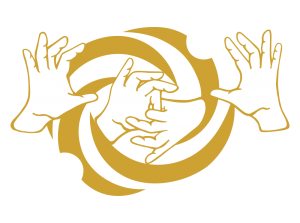

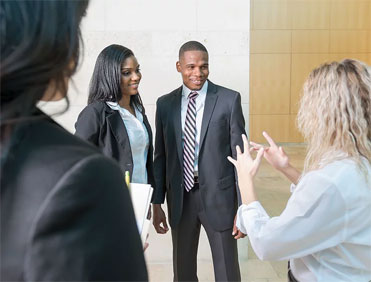
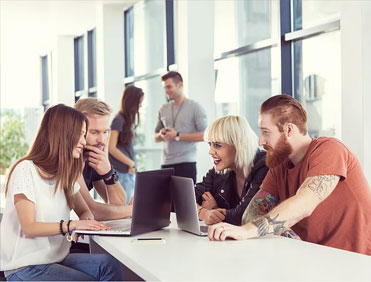
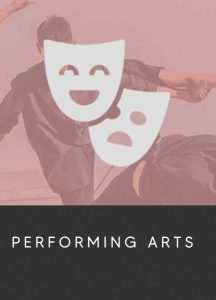
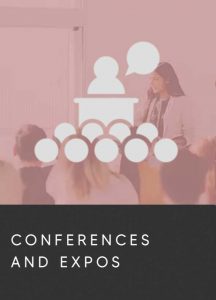
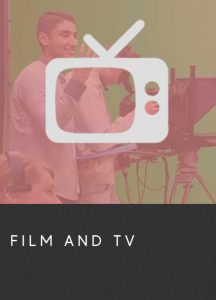
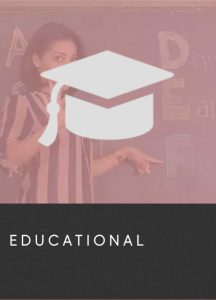
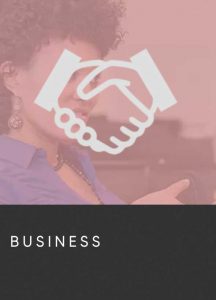
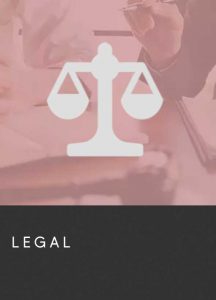
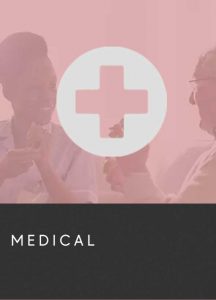

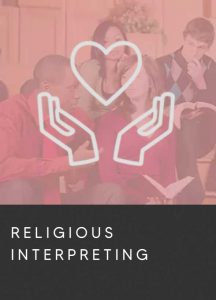
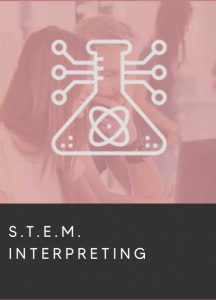
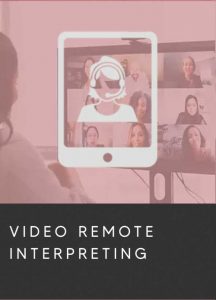
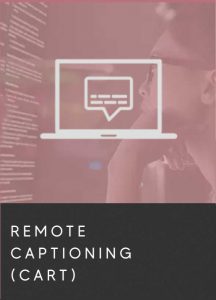

 This past month, actor and
This past month, actor and  Although its true that programs like text-911 and text emergency alerts are beginning to roll out across the country, they are still embarrassingly unreliable considering the availability of technological resources in this era. Emergency management systems continue to malfunction, for example the alarming
Although its true that programs like text-911 and text emergency alerts are beginning to roll out across the country, they are still embarrassingly unreliable considering the availability of technological resources in this era. Emergency management systems continue to malfunction, for example the alarming  This is a fact that was for too long hidden, covered up, and denied, so it deserves to be repeated with great frequency: people who are d/Deaf deserve full access to the cultural arts!
This is a fact that was for too long hidden, covered up, and denied, so it deserves to be repeated with great frequency: people who are d/Deaf deserve full access to the cultural arts! The rights of deaf inmates are extremely limited and often violated.
The rights of deaf inmates are extremely limited and often violated.  It’s hard to believe that it’s 2018 and we still haven’t found a consistent and effective means of communicating time, gate, and route changes for major transportation methods. Deaf people still frequently miss train and plane announcements, which often happen at the last minute. Visual notifications at airports can lag, and airport staff are not all trained to be culturally aware when interacting with a lost passenger who is deaf.
It’s hard to believe that it’s 2018 and we still haven’t found a consistent and effective means of communicating time, gate, and route changes for major transportation methods. Deaf people still frequently miss train and plane announcements, which often happen at the last minute. Visual notifications at airports can lag, and airport staff are not all trained to be culturally aware when interacting with a lost passenger who is deaf. Intricate robotic communication devices, such as “sign language gloves” and intuitive interpreting apps, have always captivated the minds of innovators looking to help bridge the gap between the deaf and hearing world. If advanced to a stage of development where they functioned as intended, these types of devices would offer an interesting new option for deaf and hearing individuals to communicate in one-to-one, or maybe even small group settings. However, most people who are actively involved with the deaf community know that navigating the language barrier during calm, planned personal interactions isn’t the most pressing accessibility issue that people who are d/Deaf/Hard of hearing face.
Intricate robotic communication devices, such as “sign language gloves” and intuitive interpreting apps, have always captivated the minds of innovators looking to help bridge the gap between the deaf and hearing world. If advanced to a stage of development where they functioned as intended, these types of devices would offer an interesting new option for deaf and hearing individuals to communicate in one-to-one, or maybe even small group settings. However, most people who are actively involved with the deaf community know that navigating the language barrier during calm, planned personal interactions isn’t the most pressing accessibility issue that people who are d/Deaf/Hard of hearing face.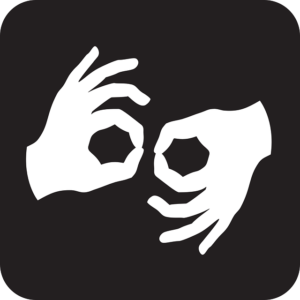
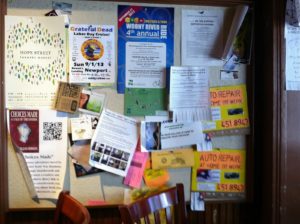 To reach the deaf population within your community, create eye-catching fliers and distribute them in areas that get heavy traffic. Libraries, gyms, coffee shops, community centers or schools (especially schools for the deaf) are good places to start. Make sure your flier prominently includes the fact that ASL interpreters and/or other access will be provided. Try using the logo for ASL interpreter somewhere that it can easily be seen.
To reach the deaf population within your community, create eye-catching fliers and distribute them in areas that get heavy traffic. Libraries, gyms, coffee shops, community centers or schools (especially schools for the deaf) are good places to start. Make sure your flier prominently includes the fact that ASL interpreters and/or other access will be provided. Try using the logo for ASL interpreter somewhere that it can easily be seen.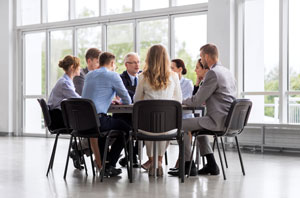 While Deaf Clubs are not as popular as they once were, searching “Deaf Club [your city name]” on the internet may still be an easy way to connect with the local deaf community. If there is a website, social media page, or message board for a local Deaf Club, try reaching out with information about your event. See if you can find the right person to help you distribute the information effectively. You may also want to search “Deaf Events [your city name]” or “Deaf Meetup [your city name],” which is a site popularly used by the community to organize informal gatherings. If you find there is a local group of deaf individuals who get together for coffee, ask if you could drop off some promotional materials at their next meeting. Ask around at any local churches that offer ASL interpreted prayer to see if they have deaf congregation members that might be interested in your event. Or maybe there’s a Deaf yoga group? A little networking can go a long way!
While Deaf Clubs are not as popular as they once were, searching “Deaf Club [your city name]” on the internet may still be an easy way to connect with the local deaf community. If there is a website, social media page, or message board for a local Deaf Club, try reaching out with information about your event. See if you can find the right person to help you distribute the information effectively. You may also want to search “Deaf Events [your city name]” or “Deaf Meetup [your city name],” which is a site popularly used by the community to organize informal gatherings. If you find there is a local group of deaf individuals who get together for coffee, ask if you could drop off some promotional materials at their next meeting. Ask around at any local churches that offer ASL interpreted prayer to see if they have deaf congregation members that might be interested in your event. Or maybe there’s a Deaf yoga group? A little networking can go a long way!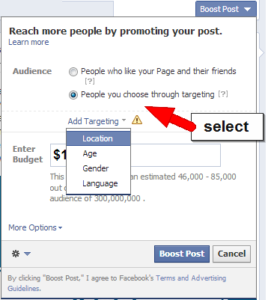 The widespread use of social media has made is easier than ever for individuals who are deaf to stay connected, both with each other and with the majority hearing culture. If you don’t know where to start, Facebook is an excellent tool for promoting your event to the local community. First: create an “Event” page using your brand’s Facebook page, if you have not already done so. Include all the relevant details about the event, and make sure it clearly states that ASL interpreters will be provided. Promote this event on your brand/ organization’s Facebook page on a regular basis to make sure your fans see it. You might want to “pin” the post to the top of you page.
The widespread use of social media has made is easier than ever for individuals who are deaf to stay connected, both with each other and with the majority hearing culture. If you don’t know where to start, Facebook is an excellent tool for promoting your event to the local community. First: create an “Event” page using your brand’s Facebook page, if you have not already done so. Include all the relevant details about the event, and make sure it clearly states that ASL interpreters will be provided. Promote this event on your brand/ organization’s Facebook page on a regular basis to make sure your fans see it. You might want to “pin” the post to the top of you page.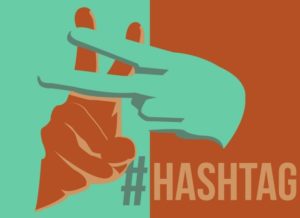 If you have more time and are looking to foster a deeper connection to the deaf online community, try following the #Deaf hashtag for a while, follow deaf individuals, and observe public discussions on all different outlets. Soon, you will be able to start identifying the more active influencers. Engage these individuals, use your own platform to share their messages, and develop a solid repertoire. Then, the next time you have an event to promote, these individuals will be more likely to reciprocate and share your information with their audiences. Investing in these mutually beneficial relationships can be worth it in the long run.
If you have more time and are looking to foster a deeper connection to the deaf online community, try following the #Deaf hashtag for a while, follow deaf individuals, and observe public discussions on all different outlets. Soon, you will be able to start identifying the more active influencers. Engage these individuals, use your own platform to share their messages, and develop a solid repertoire. Then, the next time you have an event to promote, these individuals will be more likely to reciprocate and share your information with their audiences. Investing in these mutually beneficial relationships can be worth it in the long run. For example: if you were promoting an upcoming musical event with ASL interpreters, you would want this message to reach deaf music-lovers. Maybe you could contact local college music programs, open mic nights, or music shops to see if they could put the word out there for you, too. If you were organizing an ASL interpreted art event, it might be a good idea to connect with local schools, arts and craft stores, museums, galleries, and prominent local artists to help spread the news. Be sure to emphasize that interpreting services will be provided!
For example: if you were promoting an upcoming musical event with ASL interpreters, you would want this message to reach deaf music-lovers. Maybe you could contact local college music programs, open mic nights, or music shops to see if they could put the word out there for you, too. If you were organizing an ASL interpreted art event, it might be a good idea to connect with local schools, arts and craft stores, museums, galleries, and prominent local artists to help spread the news. Be sure to emphasize that interpreting services will be provided!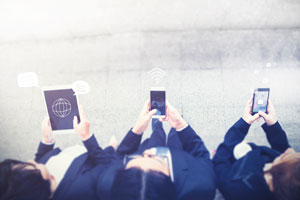 Imagine this: you sit down on Sunday evening to stream a popular TV program– that show everyone will be discussing tomorrow. When the show starts, however, all the characters are using a completely foreign language. You can’t understand a thing! There are no subtitles and no closed captioning. Everyone on your Twitter feed is chatting about the program, but you aren’t able to follow the plot! This frustrating scenario is common for people who are Deaf or hard of hearing. Media technology is rapidly evolving, yet accessibility continues to lag behind.
Imagine this: you sit down on Sunday evening to stream a popular TV program– that show everyone will be discussing tomorrow. When the show starts, however, all the characters are using a completely foreign language. You can’t understand a thing! There are no subtitles and no closed captioning. Everyone on your Twitter feed is chatting about the program, but you aren’t able to follow the plot! This frustrating scenario is common for people who are Deaf or hard of hearing. Media technology is rapidly evolving, yet accessibility continues to lag behind.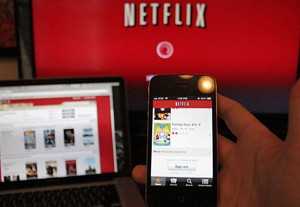 The 9th Circuit Federal appeals court recently ruled that
The 9th Circuit Federal appeals court recently ruled that 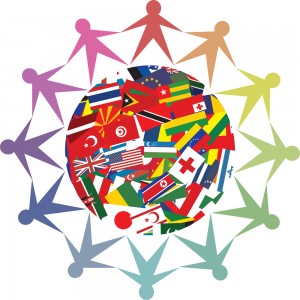 It is estimated that one in every six people on Earth experiences some degree of hearing loss; that number grows to one in three for individuals over 65 years old. These are people who deserve the same access to new media and pop culture as everyone else, and closed captioning helps provide that. Closed captioning doesn’t just serve individuals who are Deaf/HoH, closed captioning is helpful for those with autism and intellectual developmental disorders, making it easier to follow along with the video. Additionally, many closed captioning users are non-native speakers who utilize the text to help learn the spoken language. Have you ever tried to watch a sports game in a noisy bar? This is an example where closed captioning is helpful for everyone.
It is estimated that one in every six people on Earth experiences some degree of hearing loss; that number grows to one in three for individuals over 65 years old. These are people who deserve the same access to new media and pop culture as everyone else, and closed captioning helps provide that. Closed captioning doesn’t just serve individuals who are Deaf/HoH, closed captioning is helpful for those with autism and intellectual developmental disorders, making it easier to follow along with the video. Additionally, many closed captioning users are non-native speakers who utilize the text to help learn the spoken language. Have you ever tried to watch a sports game in a noisy bar? This is an example where closed captioning is helpful for everyone.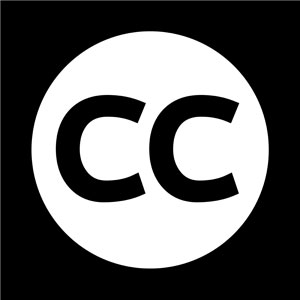 The first closed captioning appeared on PBS stations in 1972, more than 20 years after hearing Americans had come to rely on TV as a source of news and entertainment. During this turbulent time in American history, television was forming culture and shaping public opinion, but Deaf individuals had to seek out this information in other ways. In 1979 the National Captioning Institute was created to work with TV networks to provide closed captioning, which was only available if the viewer purchased an expensive set-top decoder box: a barrier for many people. The Television Decoder Circuitry Act was passed in 1990, giving the Federal Communications Commission oversight of closed captioning. The Television Decoder Circuitry Act required almost all television receivers sold or manufactured have the built-in ability to display closed captioning by July 1, 1993. This act was later expanded upon to include regulations for digital television sets.
The first closed captioning appeared on PBS stations in 1972, more than 20 years after hearing Americans had come to rely on TV as a source of news and entertainment. During this turbulent time in American history, television was forming culture and shaping public opinion, but Deaf individuals had to seek out this information in other ways. In 1979 the National Captioning Institute was created to work with TV networks to provide closed captioning, which was only available if the viewer purchased an expensive set-top decoder box: a barrier for many people. The Television Decoder Circuitry Act was passed in 1990, giving the Federal Communications Commission oversight of closed captioning. The Television Decoder Circuitry Act required almost all television receivers sold or manufactured have the built-in ability to display closed captioning by July 1, 1993. This act was later expanded upon to include regulations for digital television sets. It took over a decade for the FCC to begin regulating Internet broadcast.
It took over a decade for the FCC to begin regulating Internet broadcast.  While certain online companies scramble to catch up, or make excuses for not providing adequate captioning, other entities are embracing the opportunity to break down communication barriers. Apple is one company that has gone above and beyond to welcome diverse users. By creating products with excellent built-in accessibility, and providing outstanding accessibility support, Apple really sets the bar for inclusion. Kickstarter recently launched it’s new video captioning initiative with the tag line “creativity is for everyone.” Kickstarter is one of the largest crowdfunding sites on the web; countless individuals have had their projects funded by other people around the world using this platform. By making it easy for people who are deaf to access these opportunities, Kickstarter helps open the door for future deaf innovators and entrepreneurs.
While certain online companies scramble to catch up, or make excuses for not providing adequate captioning, other entities are embracing the opportunity to break down communication barriers. Apple is one company that has gone above and beyond to welcome diverse users. By creating products with excellent built-in accessibility, and providing outstanding accessibility support, Apple really sets the bar for inclusion. Kickstarter recently launched it’s new video captioning initiative with the tag line “creativity is for everyone.” Kickstarter is one of the largest crowdfunding sites on the web; countless individuals have had their projects funded by other people around the world using this platform. By making it easy for people who are deaf to access these opportunities, Kickstarter helps open the door for future deaf innovators and entrepreneurs. 20. KODA Signs Holiday Concert for Deaf Parents:
20. KODA Signs Holiday Concert for Deaf Parents: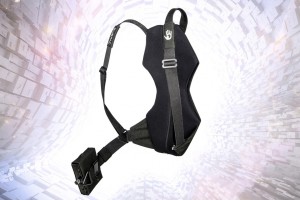 19. New Technologies Present New Possibilities:
19. New Technologies Present New Possibilities: 18. Deaf Interpreter demonstrates what equal access really looks like at Atlanta PRIDE:
18. Deaf Interpreter demonstrates what equal access really looks like at Atlanta PRIDE: 17. People in Costumes Using ASL with Kids:
17. People in Costumes Using ASL with Kids: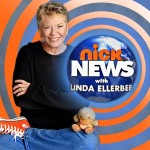 16. “Now Hear This” Premiers on Nickelodeon
16. “Now Hear This” Premiers on Nickelodeon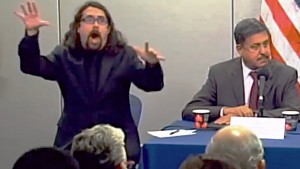 15. Deaf Interpreter goes Viral After NYC Ebola Press Conference
15. Deaf Interpreter goes Viral After NYC Ebola Press Conference 14. Popular TV Show “Fargo” Casts a Deaf Character who Uses ASL:
14. Popular TV Show “Fargo” Casts a Deaf Character who Uses ASL: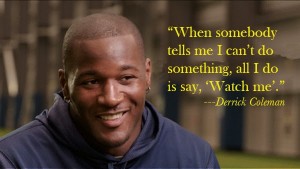 13. Deaf Athletes in Professional Sports:
13. Deaf Athletes in Professional Sports: 12. Deaf Pioneers Leave Their Legacy:
12. Deaf Pioneers Leave Their Legacy: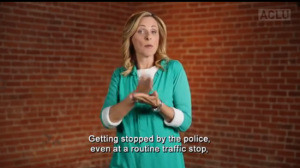 10. Marlee Matlin partners with ACLU and HEARD for #KnowYourRights videos:
10. Marlee Matlin partners with ACLU and HEARD for #KnowYourRights videos: 9. Professional Dancer and His Deaf Mother Prove Music is for EVERYONE!
9. Professional Dancer and His Deaf Mother Prove Music is for EVERYONE! 7. Deaf Med Student Wins Legal Battle
7. Deaf Med Student Wins Legal Battle
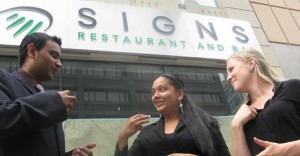 5. Signs Restaurant Opens in Toronto:
5. Signs Restaurant Opens in Toronto: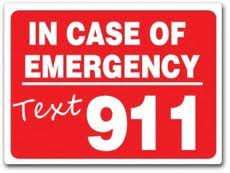 4. Text to 911 Rolls Out:
4. Text to 911 Rolls Out: 3. ASL Rap Battle On Jimmy Kimmel Live:
3. ASL Rap Battle On Jimmy Kimmel Live: 2. Deaf Superheroes Demonstrate the Power of Diversity:
2. Deaf Superheroes Demonstrate the Power of Diversity: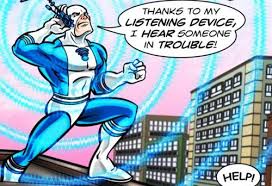 with very few deviations from the norm. In 2014, we saw diversity creeping into the fantasy world of good and evil when audiences were introduced to Deaf superheroes like Blue Ear and Superdeafy.
with very few deviations from the norm. In 2014, we saw diversity creeping into the fantasy world of good and evil when audiences were introduced to Deaf superheroes like Blue Ear and Superdeafy.  1. Camp Mark Seven Goes Viral with “Happy” video:
1. Camp Mark Seven Goes Viral with “Happy” video: Last week, Mayor Bill de Blasio addressed the citizens of New York to discuss the city’s first confirmed case of Ebola. During the press conference the mayor’s ASL interpreter,
Last week, Mayor Bill de Blasio addressed the citizens of New York to discuss the city’s first confirmed case of Ebola. During the press conference the mayor’s ASL interpreter, 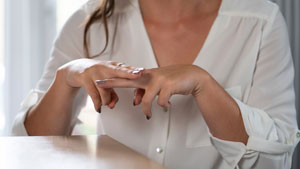 New York City is truly a melting pot with people of all ethnic backgrounds, education levels, and ability. In times when peoples’ health or lives might be in danger,
New York City is truly a melting pot with people of all ethnic backgrounds, education levels, and ability. In times when peoples’ health or lives might be in danger, 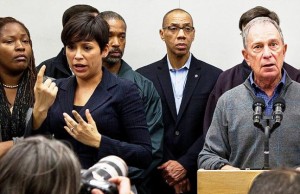 Deaf people who use sign language to communicate may read and write English quite well; or they may not know English at all. Many deaf people have excellent ASL skills, while others only know informal sign languages called “home signs.” Additionally, in a large city like New York there is a whole audience of foreign born deaf people for whom ASL is a second language.
Deaf people who use sign language to communicate may read and write English quite well; or they may not know English at all. Many deaf people have excellent ASL skills, while others only know informal sign languages called “home signs.” Additionally, in a large city like New York there is a whole audience of foreign born deaf people for whom ASL is a second language.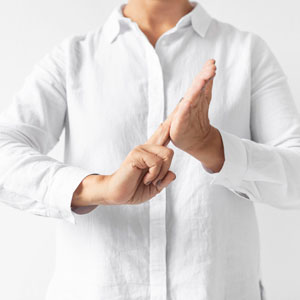 Delivering health and safety information is an important role, not an entertainment event. It puts a lot of pressure on ASL interpreters when their performance is judged not only by deaf consumers, but by hearing audiences who have little understanding of the job at hand.
Delivering health and safety information is an important role, not an entertainment event. It puts a lot of pressure on ASL interpreters when their performance is judged not only by deaf consumers, but by hearing audiences who have little understanding of the job at hand.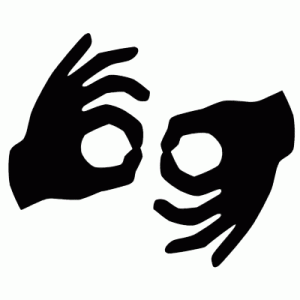 It’s wonderful when sign language gets so much Internet attention, because it provides new opportunities for mainstream society to become educated about Deaf culture. I think it is important that when general audiences to see ASL interpreters in the media, they understand the true the function we serve.
It’s wonderful when sign language gets so much Internet attention, because it provides new opportunities for mainstream society to become educated about Deaf culture. I think it is important that when general audiences to see ASL interpreters in the media, they understand the true the function we serve.





